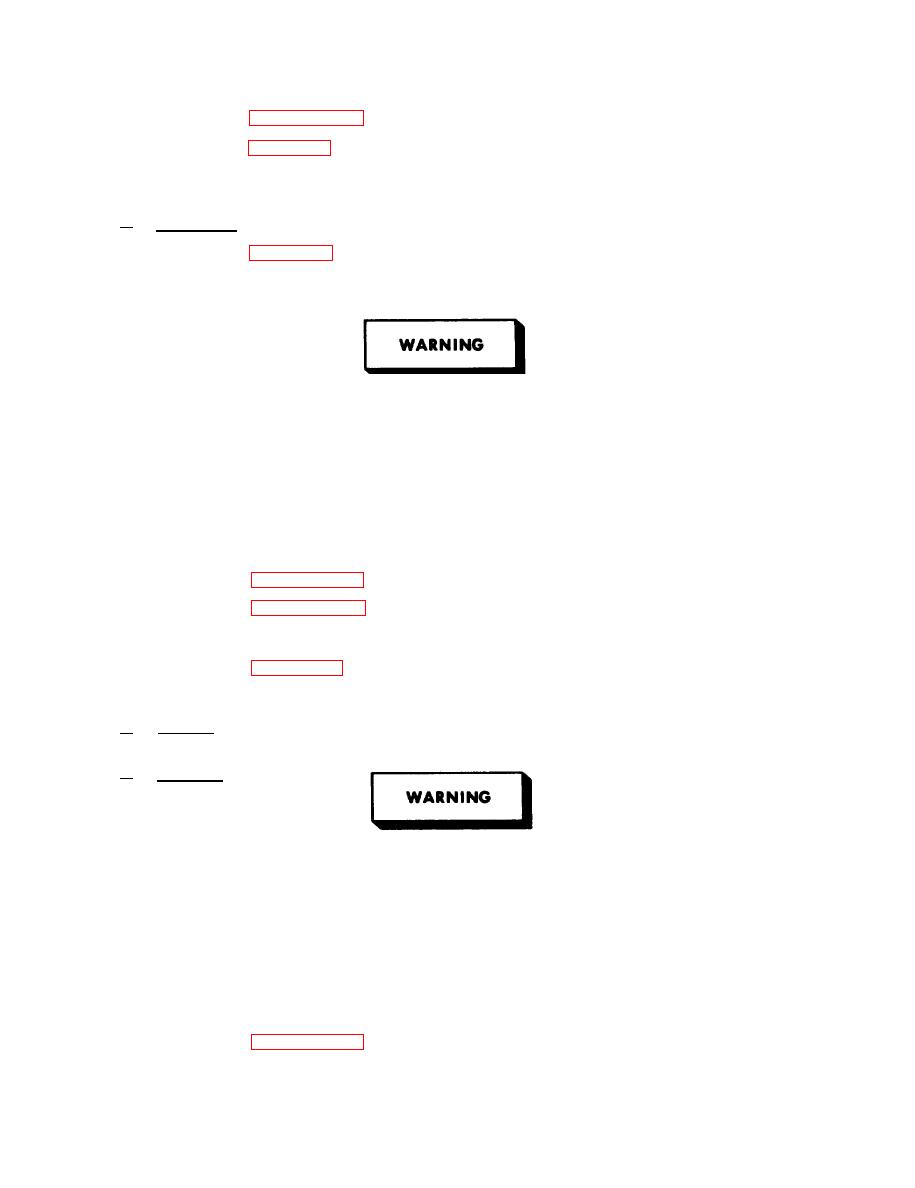 |
|||
|
|
|||
|
|
|||
| ||||||||||
|
|
 TM 5-4120-369-14
PRESSURE RELIEF VALVE - Continued
5-19.
(2) Refer to paragraph 6-3 and discharge the refrigerant system.
(3) Refer to figure 5-3 and remove the clamp around the pressure relief valve by
removing the screw and washer that hold the clamp to the condenser fan housing.
(4) Unscrew the flare nut and remove the pressure relief valve.
Installation.
b.
(1) Refer to figure 5-3 and install the pressure relief valve by fastening the
refrigerant circuit flare nut to the pressure relief valve.
(2) Using the screw and washer install the clamp that fastens the pressure relief
valve to the condenser fan housing.
Caution should be exercised with flourocarbon refrigerant
gas (freons) as they can displace oxygen and thereby
cause suffocation.
Personnel with a history or other evidence of cardiac
rhythm abnormalities should be made aware of the potential
for aggravation of existing cardiac rhythm abnormalities
or the induction of arrhythmias, as a result of exposure
to flourocarbon refrigerant gases (freons). Such indivi-
duals should be evaluated by local medical authorities
before working in environments where potential freon
exposure may occur.
(3) Refer to paragraph 6-3 and leak test the refrigeration system.
(4) Refer to paragraph 6-3 and purge the refrigeration system.
(5) Refer to figure 6-3 and charge the refrigeration system.
(6) Refer to figure 4-18 and install top cover.
General. The dehydrator (filter drier) is to be replaced whenever the refrigeration
a.
system is opened for maintenance.
Removal.
b.
Caution should be exercised with flourocarbon refrigerant
gas (freons) as they can displace oxygen and thereby
cause suffocation.
Personnel with a history or other evidence of cardiac
rhythm abnormalities should be made aware of the
potential for aggravation of existing cardiac rhythm
abnormalities or the induction of arrhythmias, as a
result of exposure to flourocarbon refrigerent gases
freons. Such individuals should be evaluated by
local medical authorities before working in environments
where potential freon exposure may occur.
(1) Refer to paragraph 6-3 and discharge the refrigerant system.
|
|
Privacy Statement - Press Release - Copyright Information. - Contact Us |